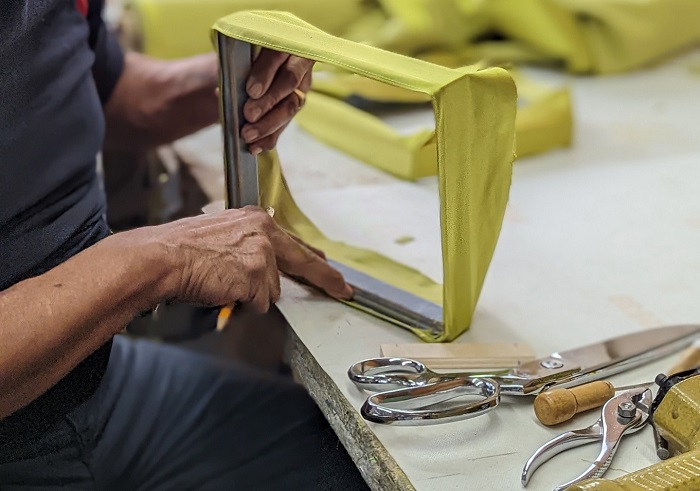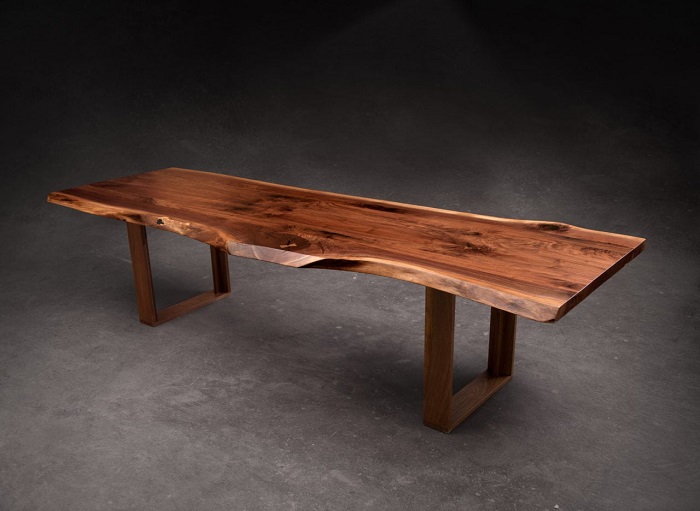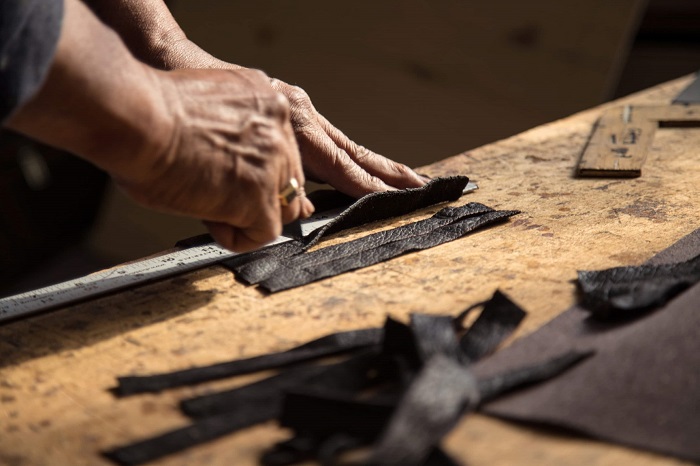In a world increasingly attuned to the consequences of its consumption, a significant shift is emerging in the realms of fashion and luxury goods. This transition, marked by a heightened environmental consciousness, is reshaping the way we perceive and engage with these industries.

Recent data underscores this eco-conscious shift. A 2023 report revealed that the global market for sustainable luxury goods has grown by 15% annually, outpacing the overall sector. In fashion, brands using sustainable materials have seen a 20% increase in consumer demand. Similarly, the furniture market reflects this trend, with a 25% rise in sales of eco-friendly products, particularly in natural wood and organic upholstery segments. These figures not only highlight a burgeoning market interest but also signal a profound change in consumer priorities, where the value of a product is increasingly measured by its environmental impact and ethical production standards.
Fashion Leads the Way in Sustainable Practices
In the domain of fashion, there’s a marked trend towards embracing eco-friendly materials and processes. Designers are now prioritizing sustainable dyes, which offer a lower environmental impact while maintaining vibrant color palettes. Additionally, the development of fabrics with high durability and ecological compatibility highlights an industry-wide commitment to merging aesthetic appeal with sustainability.
Building on this momentum, the fashion industry is delving deeper into technical innovations to enhance sustainability. For instance, the integration of advanced bio-fabricated materials, which replicate leather and silk properties without the environmental toll, is gaining ground.
In textile production, the shift towards organic cotton and bamboo fibers, known for their low water footprint and biodegradability, is remarkable. These materials not only offer high tensile strength and durability but also significantly reduce the reliance on harmful pesticides and water-intensive cultivation practices. With the adoption of closed-loop systems in dyeing processes, where water and chemicals are recycled and reused, the industry undergoes a sophisticated change to its manufacturing process as to minimizing waste and pollution.
This technical evolution in fashion illustrates a profound rethinking of material sourcing and production methods, aiming to align the industry’s creative aspirations with ecological responsibilities.
Natural Wood’s Growing Appeal in Furniture Design

Within the luxury goods sector, natural wood has become increasingly significant for designers and manufacturers. Its appeal lies not just in its aesthetic beauty and durability, but also in its environmental sustainability. Live edge furniture, a category that maintains the natural lines of the wood, has gained popularity. It represents a fusion of rustic charm with modern design sensibilities, underpinned by a commitment to environmental stewardship. This artistic design has proliferated across several distinct categories including dining tables, custom home office desks, and even corporate furnishing that reinvigorate the workspace.
In the realm of natural wood furniture, technical advancements and sustainability go hand in hand. The use of precision woodworking techniques to preserve and highlight the unique grain patterns in each piece of furniture is a testament to this synergy.
The industry as a whole is increasingly turning towards sustainably managed forests and reclaimed wood sources, ensuring that the environmental impact is minimized. This extends to specialized treatments and finishes, free from volatile organic compounds (VOCs), which are being applied to enhance the durability and beauty of the wood while maintaining ecological integrity. Other materials are continually explored, to broaden the repertoire of sustainable design choices. These include natural stone, recycled plastic, composite concrete, or resin-based adhesive. Hailing from the Brooklyn boroughs and the New York design scene, and all the way to French workshops, innovation doesn’t seem to take a break as it moves with equal gusto worldwide.
Hardwood Furniture: A Synthesis of Strength and Sustainability
In hardwood furniture, the focus on materials like oak and walnut, known for their high tensile strength, reflects a deeper appreciation for quality and longevity. This choice is about more than mere durability; it’s a statement about responsible consumption and sustainable living. The craftsmanship in these pieces goes beyond utility, becoming a symbol of skill, artistry, and environmental consciousness.
This appreciation for hardwoods like oak and walnut is further enriched by a deeper understanding of their specific qualities. Oak, for instance, is renowned for its density and strength, making it ideal for furniture that can withstand years of use. Its grain patterns also offer aesthetic versatility, fitting a range of design preferences. Walnut, on the other hand, is prized for its rich color and fine texture, lending a sense of luxury and warmth to pieces. Both woods are sourced with a focus on sustainable forestry practices, ensuring their longevity as resources.
The crafting process, too, incorporates advanced joinery techniques and environmentally friendly adhesives, enhancing the structural integrity and minimizing the ecological footprint. This thoughtful approach to selecting and working with hardwoods reflects a broader commitment in the industry to produce furniture that is not only durable and beautiful but also responsible and sustainable.
Advancing Towards Sustainable Upholstery Practices

The transformation extends to upholstery as well, where the use of organic materials like natural latex, wool, and cotton is gaining prominence. These materials not only reduce the ecological footprint but also enhance the comfort and longevity of furniture, representing a move towards more sustainable living spaces.
This trend in custom upholstery is also driving innovation in material technology and design. For instance, advancements in weaving and fabric treatment techniques are enhancing the natural qualities of these organic materials, such as breathability, moisture-wicking, and durability. Designers and manufacturers are increasingly exploring the use of recycled fibers and non-toxic dyes in their custom upholstery options, further reducing the carbon footprint. This focus on sustainable materials in custom upholstery is not just an environmental statement but also a reflection of consumer demand for products that align with their values of eco-responsibility and personal well-being.
A Broader Movement in Luxury Consumer Goods
This eco-friendly ethos is spreading beyond furniture and apparel, encompassing a wide range of luxury consumer goods. From accessories made with recycled materials to environmentally conscious home décor, the luxury market is embracing a philosophy where opulence coexists with ecological responsibility.
This rising popularity of eco-friendly design in fashion and luxury consumer goods is more than a fleeting trend. It reflects a deeper shift in values, where the allure of luxury is increasingly found in its harmony with the environment, offering a vision of a future where elegance and ecological awareness are seamlessly intertwined.
